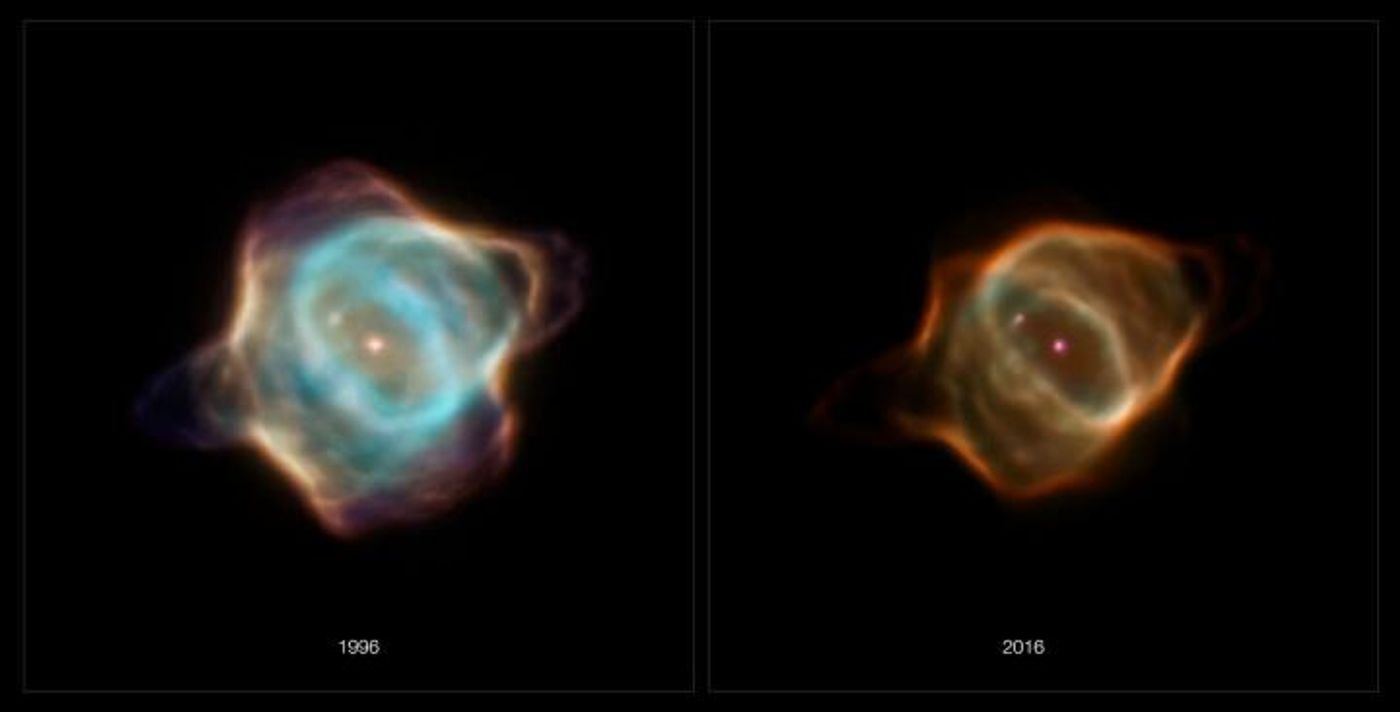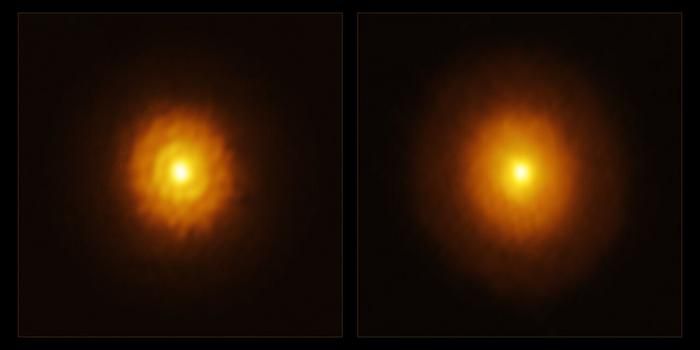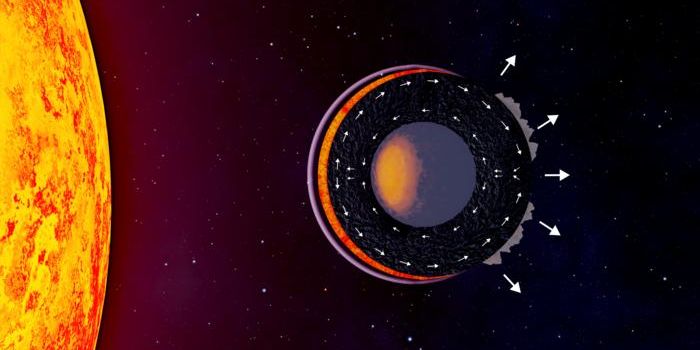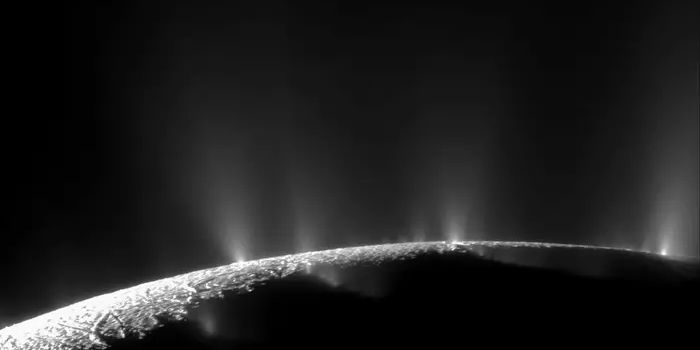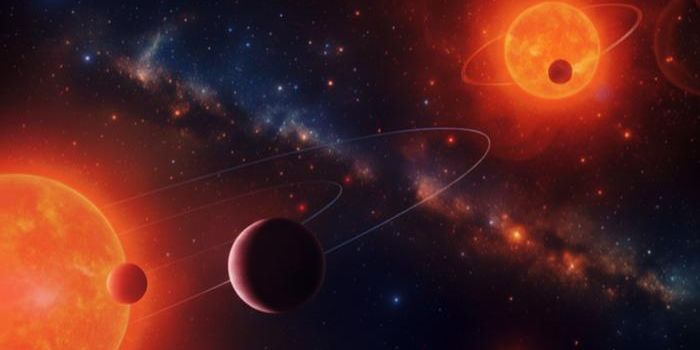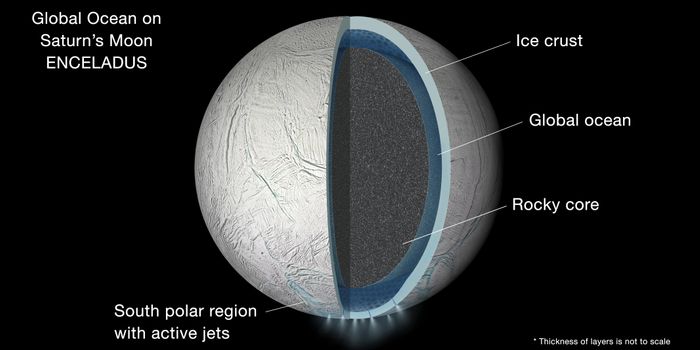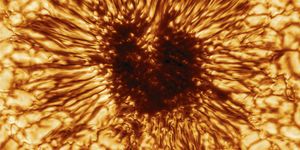Watching a Nebula Fade
Nebulas are vast clouds of dust and gas that are remnants of exploded stars or in other cases, nurseries for where stars are born. Scientists have now observed a rapidly fading nebula surrounding an aging star. This nebula, called the Stingray nebula, has dramatically dimmed over the past two decades. It's thought that typically, such processes occur over timescales that are far longer than a human lifespan, so it's been a surprise that researchers have been able to watch the Stingray nebula fade over time. The findings have been reported in the Astrophysical Journal.
The researchers were able to see this unprecedented change of a planetary nebula by using archival data from the NASA/ESA Hubble Space Telescope. Hubble-acquired images that were taken in 1996 were compared to images from 2016, which showed that the nebula's brightness and shape had changed drastically. The bright puffs of gas near the nebula's center have practically disappeared, and the characteristics that gave it its name are barely discernible.
Glowing clouds of hydrogen, nitrogen, and oxygen blast out of the center of the nebula; an analysis of the light that they were emitting showed that it has diminished. The light emitted by the oxygen gas in particular has dropped nearly 1000 times.
"In most studies, the nebula usually gets bigger," said the research leader Bruce Balick of the University of Washington. "Here, it's fundamentally changing its shape and getting fainter, and doing so on an unprecedented timescale."
"Because of Hubble's optical stability, we are very, very confident that this nebula is changing in brightness," said study co-author Martin Guerrero of the Instituto de Astrofísica de Andalucía. "That easy to see since, unlike the nebula, all of the other stars in the Hubble image - including a distant companion star - stayed constant in brightness."
The researchers want to learn more about the dying star that sits at the center of the Stingray, which influences the characteristics of the nebula. They are still investigating the possible causes of these observations.
Sources: AAAS/Eurekalert! via ESA/Hubble Information Centre, Astrophysical Journal
